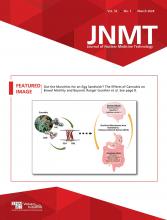Abstract
Intro: Coronary artery disease is the leading cause for morbidity and mortality. Tools have been developed to accurately diagnose and evaluate coronary artery disease. Coronary computed tomographic angiography (CCTA) scans provide detailed imaging along with analysis to in order to deliver precise analysis and prognostic information. We sought to evaluate the radiation doses of the 256 detector CT scanner to a 64 slice scanner across a similar profile of patients. Methods: Consecutive patients were screened, enrolled, and consented for the Converge Registry study, in accordance with the Institutional Review Board (IRB) approved protocol. 110 patients underwent CCTA using the GE Revolution 256 detector CT scanner. We matched patients by age, gender and body mass index (BMI) who underwent 64 slice CT scanning. Results: We compared 110 patients in each group. We found that mean dose length product (DLP, presented also in the tables below in millisieverts (mSv)) was significantly lower in the Revolution 256 detector group compared to the 64 slice control group (p<0.05). The radiation dose was reduced 32% with use of Revolution 256 detector scanner for BMI between 18.5 and 24.9 (DLP = 111.2 vs 76.1; 1.56 vs 1.07 mSv; p<0.05). For each BMI subgroup, there was a significant decrease in dose. Regression analysis found that with the increase in BMI both scanners experienced a significant increase in DLP. Conclusion: We are able to demonstrate that the 256 slice CT scanner is able to provide CCTA scans at significantly lower radiation doses compared to the 64 row scanner at different BMI groups, with all other variables accounted for. Lower radiation exposures along with lower contrast requirements can provide quality imaging with high diagnostic accuracy and less risk to the patient.







